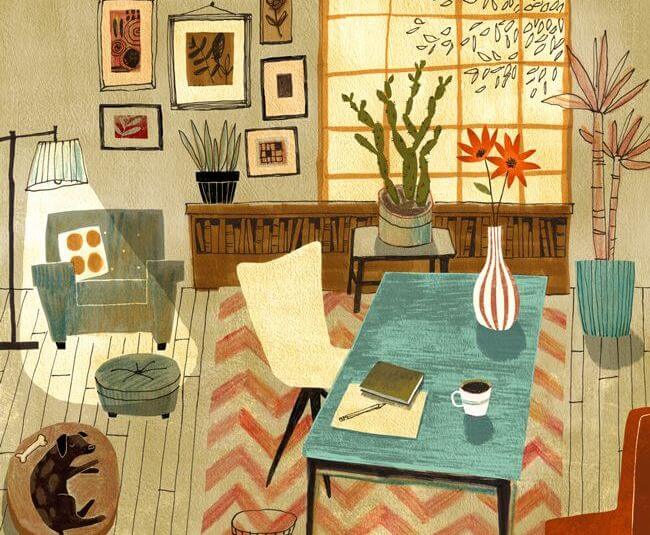How the Color of Your Walls Can Affect Your Emotions

Walls are a constructional element, but they also have a symbolic value in our lives. Walls represent an obstacle in space and metaphorically they remind us that’s there’s always a limit. In this article we’re going to look at the colors of walls and their influence in our emotional health.
If you think about it, you’ll notice that almost everyone spends a good portion of their lives looking at walls in their surroundings. At home, at the office, in a hotel and in any building where we find ourselves.
“Color is a means to exert influence directly on the soul: Color is the fabric, the eye is the hammer and the soul is the piano with its strings.”-Wassily Kandinski-
Undoubtedly, our surroundings impact the way our thoughts work and the way our emotions are organized. Though it may not seem like it, walls also speak to us.
Colors
Perception of color is greatly subjective. As such, colors don’t really exist. They are formed in the brain after it decodes the signals that light emits over objects. But additionally, under certain emotional states, colors can be perceived in different ways.
Some types of depression lead sufferer to see a kind of dark halo around everything they see. Other conditions, such as schizophrenia, may make colors seem shimmering, incandescent or deformed.
Likewise, colors generate sensations and lead to certain emotional states. It has been proven that colors also have an effect on health, activating or inhibiting biochemical and hormonal processes.
The color of our walls and its effects
Wall color is a factor that may contribute to the stimulation or stabilization of our emotions. Ideally, we’d be able to change our wall colors frequently, to match our emotional state or needs at different times. But since this is very difficult, one practical solution is to use multiple colors in the same room.
Out of the four walls in a room, two can be one color and the other two another color. Or three one color and one another color. Or each one can be a different color, as long as an aesthetic balance can be achieved.
Being influenced by various colors at once is actually pleasant and can positively influence your mood. Murals are also an interesting option, especially if they represent natural scenes such as a green field or the sea.

Emotional effects
Each color effects our emotions differently. While some stimulate us, others calm us down.
- White. It’s a neutral color that provides light and a feeling of space in a room. The psychic effect brought on by white is tranquility and freshness. It promotes concentration and allows the walls to be less noticeable. It’s recommended for people in a state of high emotional disturbance.
- Green. It’s a calming color used commonly in hospitals, precisely for its effects. Green encourages the expression of trust and well-being. It’s recommended for reducing excess anxiety and activity. In small spaces, a soft green should be used.
- Blue. This color transmits the feeling of peace and friendliness. This color helps to harmonize relations in spaces where there’s a lot of conflict. It should be used with caution, since an excess leads to apathy and a loss of appetite. It’s advisable to use lead blue or a pale turquoise.
- Yellow. This is an energetic color that helps with conquering of fears, fighting depression and increasing security. Yellow is particularly recommended for people who are undergoing processes of grief or suffering through melancholy. Yellow leads to action and promotes optimism. All shades are suitable.
- Red. Red should be used with a lot of caution. Any excess of this color on the walls could cause restlessness and stimulate the appearance of aggressive feelings. Red is stressful, so it’s best to only include it in small decorative elements or on the walls of hallways or places where you don’t have to remain for long periods of time.

This text is provided for informational purposes only and does not replace consultation with a professional. If in doubt, consult your specialist.








